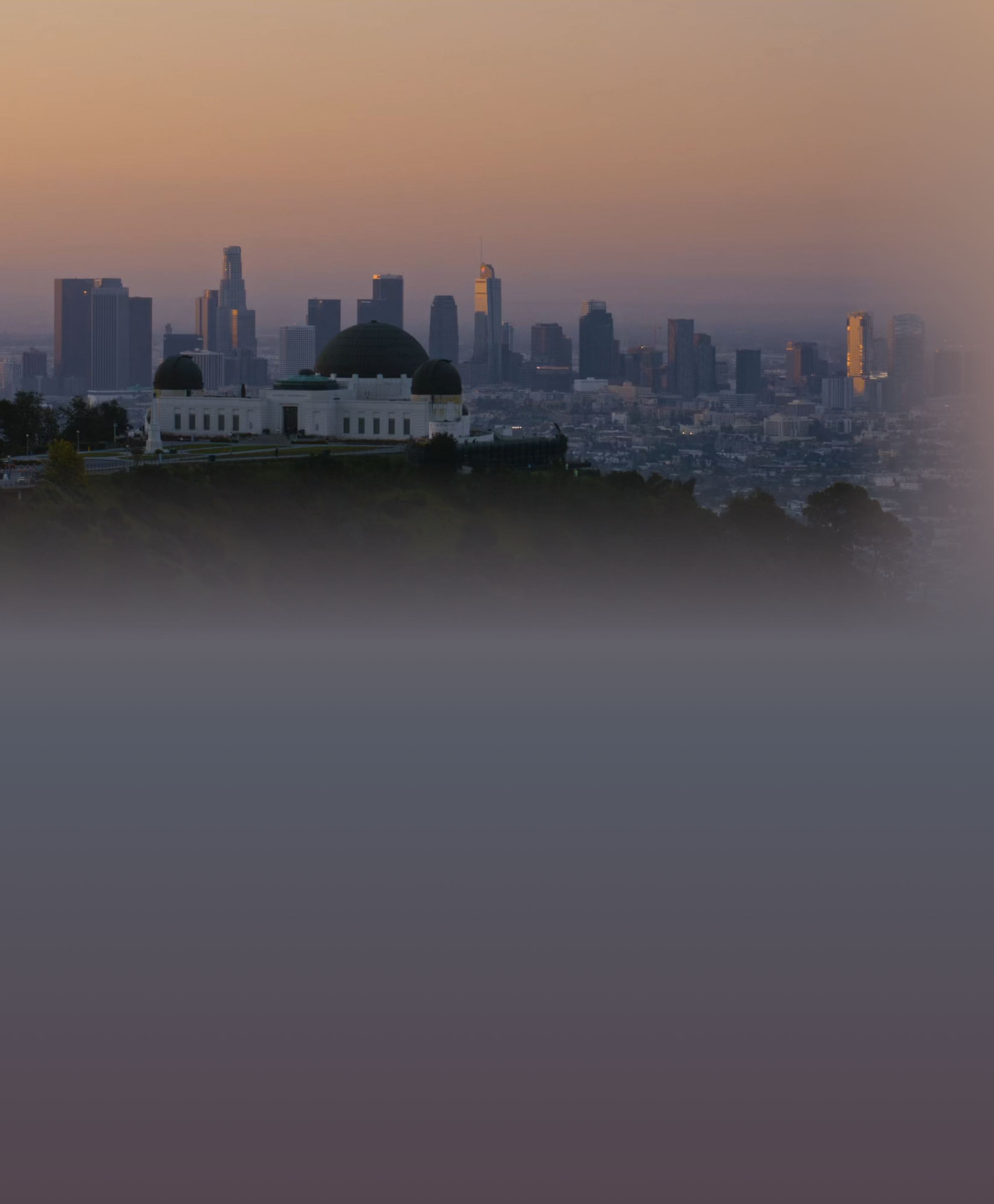1st location
Looking for sweeping views of Los Angeles? Griffith Observatory is your spot. Built as the country’s third planetarium in 1935, the gorgeous Art Deco structure offers unrivaled vistas that stretch from Downtown, to Hollywood, all the way to the Pacific Ocean.
Astronomy for the people
When the Griffith Observatory was built in the 1930s, it became the country’s third-ever planetarium. In the 1920s, a German company invented a projector that could cast the night sky onto the ceiling of a dome. Thus, the modern planetarium was invented. And people went crazy for it. In the five days after Griffith Observatory opened, over 13,000 came to visit. Its construction was part of the Works Progress Administration, meaning that it created both jobs and opportunities for wonder.
Take in the view
Aside from sprawling vistas of the city itself, Griffith Observatory also offers an A-list view of one of Los Angeles’ most iconic landmarks. The Hollywood Sign – made from telephone poles, corrugated sheet metal, and chicken wire in 1923 – once read HOLLYWOODLAND, a real estate advertisement for the burgeoning neighborhood that lay below it. By 1978, it was falling down. Luckily, Hugh Hefner dedicated himself to restoring the sign, throwing a lavish fundraiser and collecting enough money to revitalize it.
At home in LA’s largest park
The observatory is the crown jewel of Griffith Park, which covers 4,210 acres along the eastern edge of the Santa Monica mountains. At the border of Los Feliz and the Hollywood Hills, it’s home to a rich array of wildlife, from (harmless) snakes to the elegant grey fox. It’s an important stopover point for migrating birds, and over 200 species have been found in the park. In 2012, it became the first known location of P-22, the late mountain lion that became something of a beloved celebrity among Angelenos.
Stargaze in the city
Griffith observatory offers some of Los Angeles’ best (and most accessible) stargazing. While the city is close at hand, light pollution is no issue here, thanks to the telescopes that are available to the public every night when the skies are clear. Each week, the observatory publishes a “sky report", pointing potential astronomers towards the visible planets and stars. The original Zeiss telescope—in use since 1935—has been looked through by more people than any other telescope on earth. And once a month, you can find “star parties” here, where the lawn fills with telescopes brought by local hobbyists.

1st location
Looking for sweeping views of Los Angeles? Griffith Observatory is your spot. Built as the country’s third planetarium in 1935, the gorgeous Art Deco structure offers unrivaled vistas that stretch from Downtown, to Hollywood, all the way to the Pacific Ocean.
Astronomy for the people
When the Griffith Observatory was built in the 1930s, it became the country’s third-ever planetarium. In the 1920s, a German company invented a projector that could cast the night sky onto the ceiling of a dome. Thus, the modern planetarium was invented. And people went crazy for it. In the five days after Griffith Observatory opened, over 13,000 came to visit. Its construction was part of the Works Progress Administration, meaning that it created both jobs and opportunities for wonder.
Take in the view
Aside from sprawling vistas of the city itself, Griffith Observatory also offers an A-list view of one of Los Angeles’ most iconic landmarks. The Hollywood Sign – made from telephone poles, corrugated sheet metal, and chicken wire in 1923 – once read HOLLYWOODLAND, a real estate advertisement for the burgeoning neighborhood that lay below it. By 1978, it was falling down. Luckily, Hugh Hefner dedicated himself to restoring the sign, throwing a lavish fundraiser and collecting enough money to revitalize it.
At home in LA’s largest park
The observatory is the crown jewel of Griffith Park, which covers 4,210 acres along the eastern edge of the Santa Monica mountains. At the border of Los Feliz and the Hollywood Hills, it’s home to a rich array of wildlife, from (harmless) snakes to the elegant grey fox. It’s an important stopover point for migrating birds, and over 200 species have been found in the park. In 2012, it became the first known location of P-22, the late mountain lion that became something of a beloved celebrity among Angelenos.
Stargaze in the city
Griffith observatory offers some of Los Angeles’ best (and most accessible) stargazing. While the city is close at hand, light pollution is no issue here, thanks to the telescopes that are available to the public every night when the skies are clear. Each week, the observatory publishes a “sky report", pointing potential astronomers towards the visible planets and stars. The original Zeiss telescope—in use since 1935—has been looked through by more people than any other telescope on earth. And once a month, you can find “star parties” here, where the lawn fills with telescopes brought by local hobbyists.

2nd location
Looking for sweeping views of Los Angeles? Griffith Observatory is your spot. Built as the country’s third planetarium in 1935, the gorgeous Art Deco structure offers unrivaled vistas that stretch from Downtown, to Hollywood, all the way to the Pacific Ocean.
Take in the view
Aside from sprawling vistas of the city itself, Griffith Observatory also offers an A-list view of one of Los Angeles’ most iconic landmarks. The Hollywood Sign – made from telephone poles, corrugated sheet metal, and chicken wire in 1923 – once read HOLLYWOODLAND, a real estate advertisement for the burgeoning neighborhood that lay below it. By 1978, it was falling down. Luckily, Hugh Hefner dedicated himself to restoring the sign, throwing a lavish fundraiser and collecting enough money to revitalize it.
At home in LA’s largest park
The observatory is the crown jewel of Griffith Park, which covers 4,210 acres along the eastern edge of the Santa Monica mountains. At the border of Los Feliz and the Hollywood Hills, it’s home to a rich array of wildlife, from (harmless) snakes to the elegant grey fox. It’s an important stopover point for migrating birds, and over 200 species have been found in the park. In 2012, it became the first known location of P-22, the late mountain lion that became something of a beloved celebrity among Angelenos.
Stargaze in the city
Griffith observatory offers some of Los Angeles’ best (and most accessible) stargazing. While the city is close at hand, light pollution is no issue here, thanks to the telescopes that are available to the public every night when the skies are clear. Each week, the observatory publishes a “sky report", pointing potential astronomers towards the visible planets and stars. The original Zeiss telescope—in use since 1935—has been looked through by more people than any other telescope on earth. And once a month, you can find “star parties” here, where the lawn fills with telescopes brought by local hobbyists.

2nd location
Looking for sweeping views of Los Angeles? Griffith Observatory is your spot. Built as the country’s third planetarium in 1935, the gorgeous Art Deco structure offers unrivaled vistas that stretch from Downtown, to Hollywood, all the way to the Pacific Ocean.
Take in the view
Aside from sprawling vistas of the city itself, Griffith Observatory also offers an A-list view of one of Los Angeles’ most iconic landmarks. The Hollywood Sign – made from telephone poles, corrugated sheet metal, and chicken wire in 1923 – once read HOLLYWOODLAND, a real estate advertisement for the burgeoning neighborhood that lay below it. By 1978, it was falling down. Luckily, Hugh Hefner dedicated himself to restoring the sign, throwing a lavish fundraiser and collecting enough money to revitalize it.
At home in LA’s largest park
The observatory is the crown jewel of Griffith Park, which covers 4,210 acres along the eastern edge of the Santa Monica mountains. At the border of Los Feliz and the Hollywood Hills, it’s home to a rich array of wildlife, from (harmless) snakes to the elegant grey fox. It’s an important stopover point for migrating birds, and over 200 species have been found in the park. In 2012, it became the first known location of P-22, the late mountain lion that became something of a beloved celebrity among Angelenos.
Stargaze in the city
Griffith observatory offers some of Los Angeles’ best (and most accessible) stargazing. While the city is close at hand, light pollution is no issue here, thanks to the telescopes that are available to the public every night when the skies are clear. Each week, the observatory publishes a “sky report", pointing potential astronomers towards the visible planets and stars. The original Zeiss telescope—in use since 1935—has been looked through by more people than any other telescope on earth. And once a month, you can find “star parties” here, where the lawn fills with telescopes brought by local hobbyists.

3rd location
Looking for sweeping views of Los Angeles? Griffith Observatory is your spot. Built as the country’s third planetarium in 1935, the gorgeous Art Deco structure offers unrivaled vistas that stretch from Downtown, to Hollywood, all the way to the Pacific Ocean.
Astronomy for the people
When the Griffith Observatory was built in the 1930s, it became the country’s third-ever planetarium. In the 1920s, a German company invented a projector that could cast the night sky onto the ceiling of a dome. Thus, the modern planetarium was invented. And people went crazy for it. In the five days after Griffith Observatory opened, over 13,000 came to visit. Its construction was part of the Works Progress Administration, meaning that it created both jobs and opportunities for wonder.
Take in the view
Aside from sprawling vistas of the city itself, Griffith Observatory also offers an A-list view of one of Los Angeles’ most iconic landmarks. The Hollywood Sign – made from telephone poles, corrugated sheet metal, and chicken wire in 1923 – once read HOLLYWOODLAND, a real estate advertisement for the burgeoning neighborhood that lay below it. By 1978, it was falling down. Luckily, Hugh Hefner dedicated himself to restoring the sign, throwing a lavish fundraiser and collecting enough money to revitalize it.
At home in LA’s largest park
The observatory is the crown jewel of Griffith Park, which covers 4,210 acres along the eastern edge of the Santa Monica mountains. At the border of Los Feliz and the Hollywood Hills, it’s home to a rich array of wildlife, from (harmless) snakes to the elegant grey fox. It’s an important stopover point for migrating birds, and over 200 species have been found in the park. In 2012, it became the first known location of P-22, the late mountain lion that became something of a beloved celebrity among Angelenos.
Stargaze in the city
Griffith observatory offers some of Los Angeles’ best (and most accessible) stargazing. While the city is close at hand, light pollution is no issue here, thanks to the telescopes that are available to the public every night when the skies are clear. Each week, the observatory publishes a “sky report", pointing potential astronomers towards the visible planets and stars. The original Zeiss telescope—in use since 1935—has been looked through by more people than any other telescope on earth. And once a month, you can find “star parties” here, where the lawn fills with telescopes brought by local hobbyists.

3rd location
Looking for sweeping views of Los Angeles? Griffith Observatory is your spot. Built as the country’s third planetarium in 1935, the gorgeous Art Deco structure offers unrivaled vistas that stretch from Downtown, to Hollywood, all the way to the Pacific Ocean.
Astronomy for the people
When the Griffith Observatory was built in the 1930s, it became the country’s third-ever planetarium. In the 1920s, a German company invented a projector that could cast the night sky onto the ceiling of a dome. Thus, the modern planetarium was invented. And people went crazy for it. In the five days after Griffith Observatory opened, over 13,000 came to visit. Its construction was part of the Works Progress Administration, meaning that it created both jobs and opportunities for wonder.
Take in the view
Aside from sprawling vistas of the city itself, Griffith Observatory also offers an A-list view of one of Los Angeles’ most iconic landmarks. The Hollywood Sign – made from telephone poles, corrugated sheet metal, and chicken wire in 1923 – once read HOLLYWOODLAND, a real estate advertisement for the burgeoning neighborhood that lay below it. By 1978, it was falling down. Luckily, Hugh Hefner dedicated himself to restoring the sign, throwing a lavish fundraiser and collecting enough money to revitalize it.
At home in LA’s largest park
The observatory is the crown jewel of Griffith Park, which covers 4,210 acres along the eastern edge of the Santa Monica mountains. At the border of Los Feliz and the Hollywood Hills, it’s home to a rich array of wildlife, from (harmless) snakes to the elegant grey fox. It’s an important stopover point for migrating birds, and over 200 species have been found in the park. In 2012, it became the first known location of P-22, the late mountain lion that became something of a beloved celebrity among Angelenos.
Stargaze in the city
Griffith observatory offers some of Los Angeles’ best (and most accessible) stargazing. While the city is close at hand, light pollution is no issue here, thanks to the telescopes that are available to the public every night when the skies are clear. Each week, the observatory publishes a “sky report", pointing potential astronomers towards the visible planets and stars. The original Zeiss telescope—in use since 1935—has been looked through by more people than any other telescope on earth. And once a month, you can find “star parties” here, where the lawn fills with telescopes brought by local hobbyists.




.png)
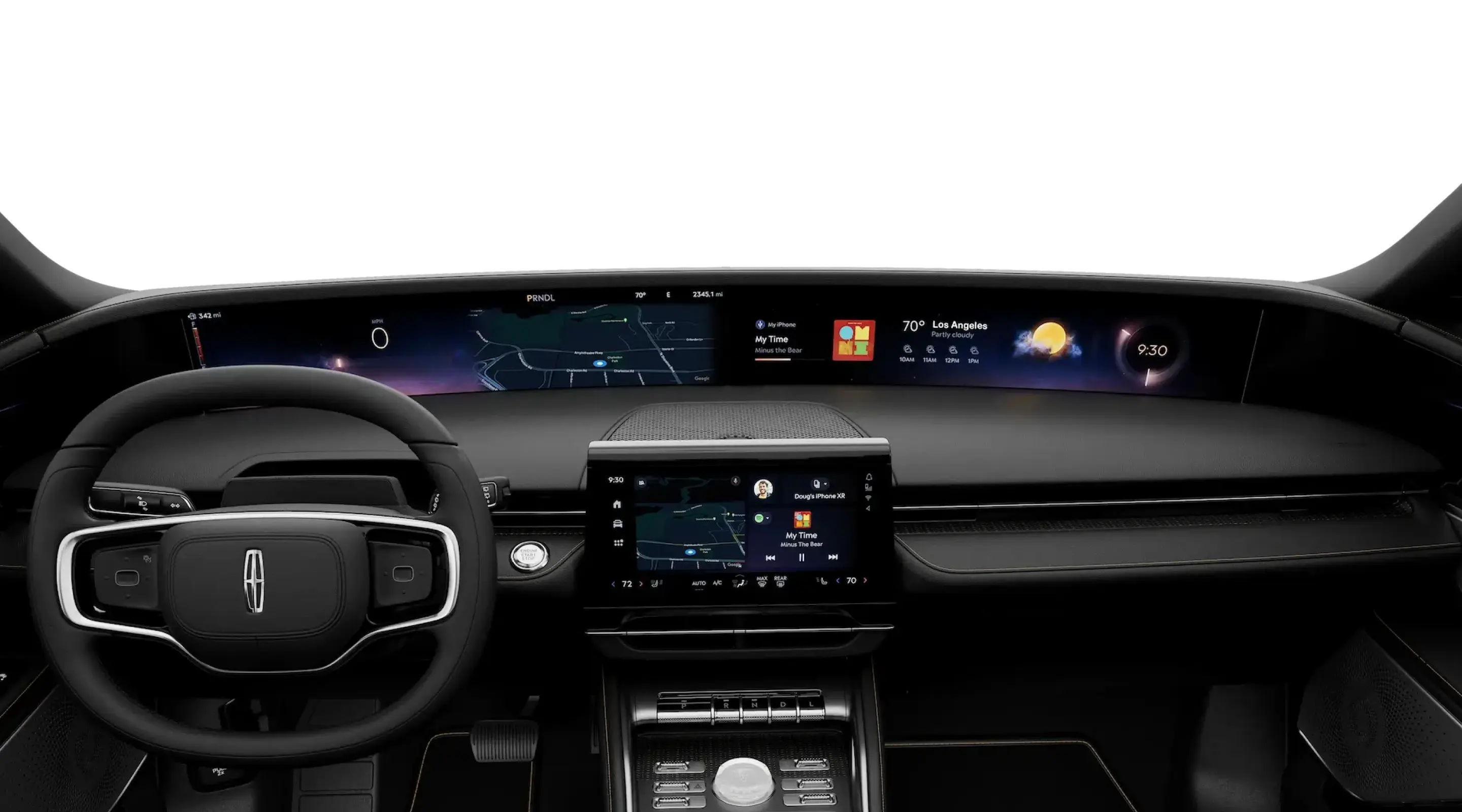
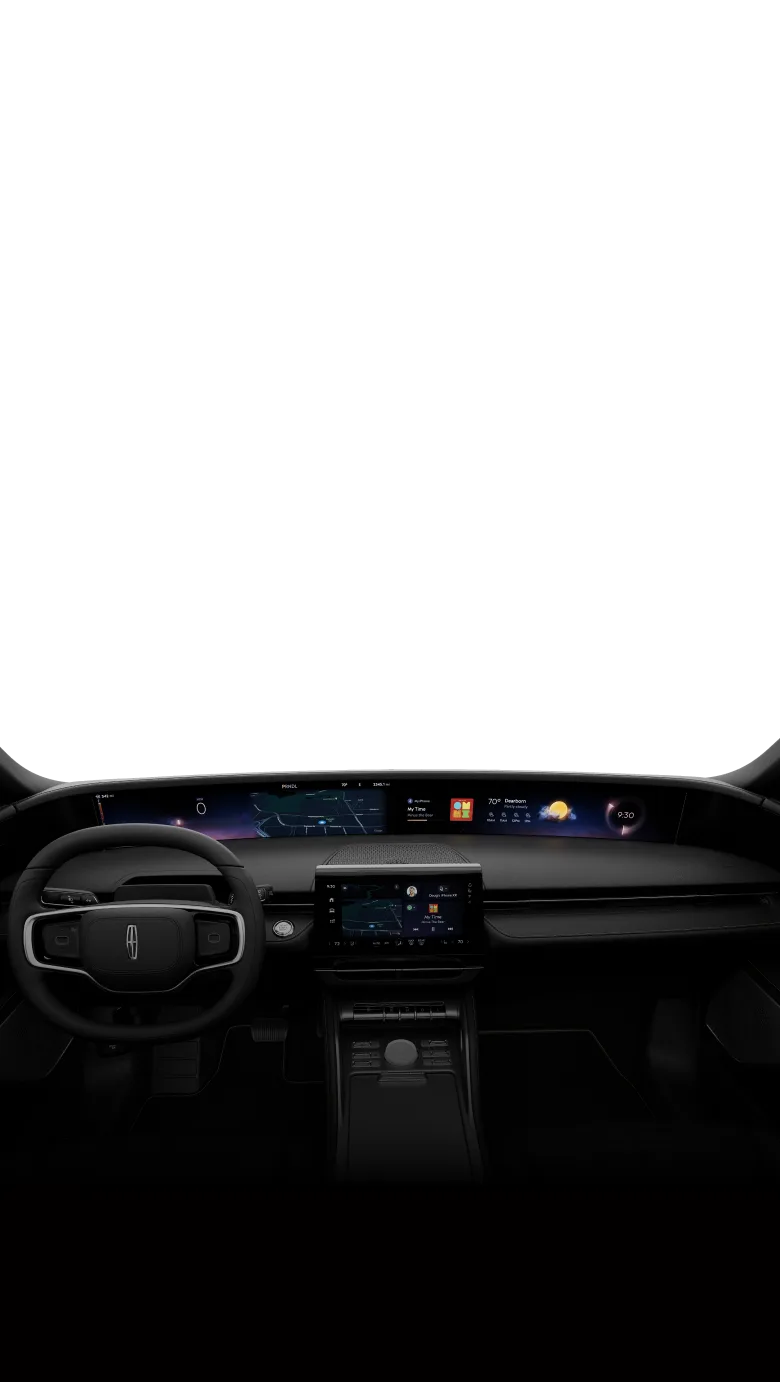
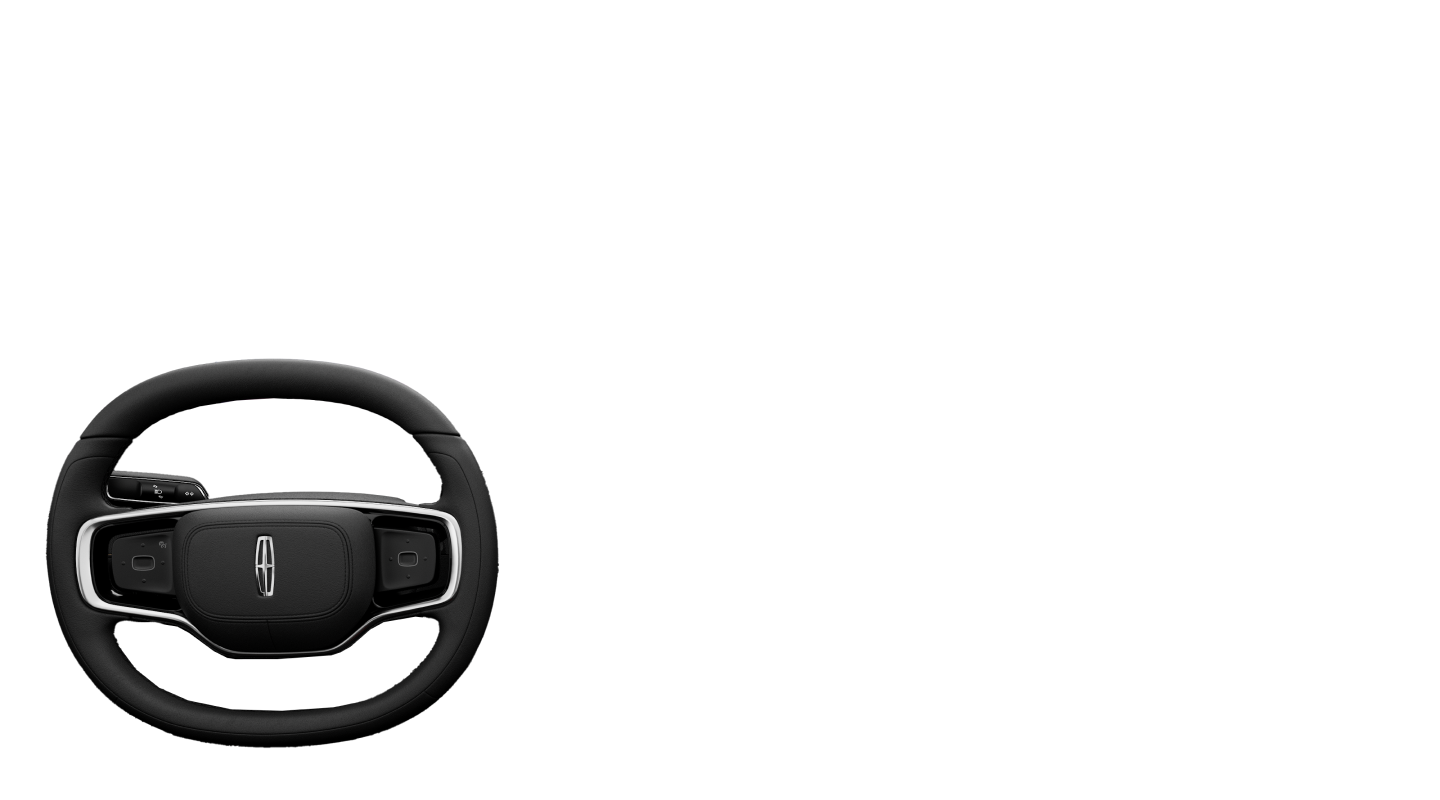
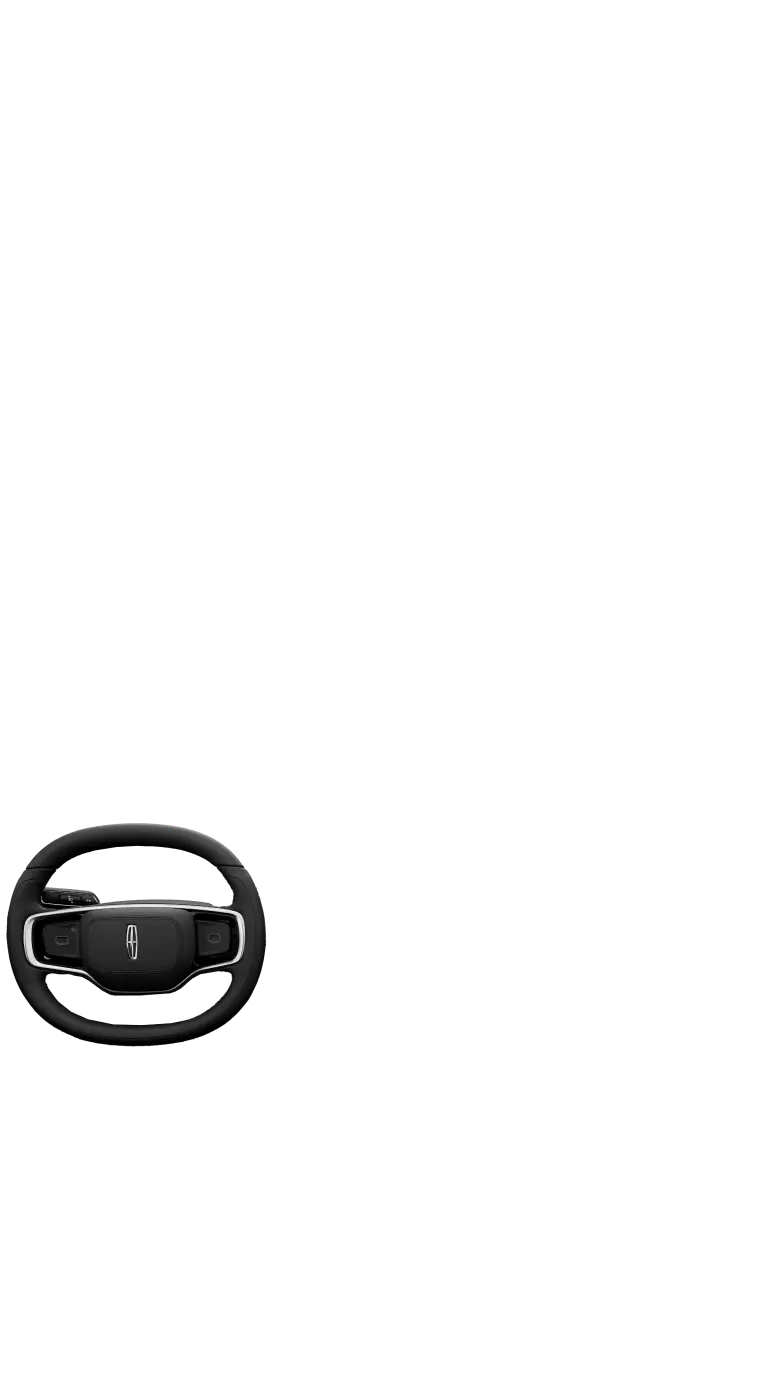


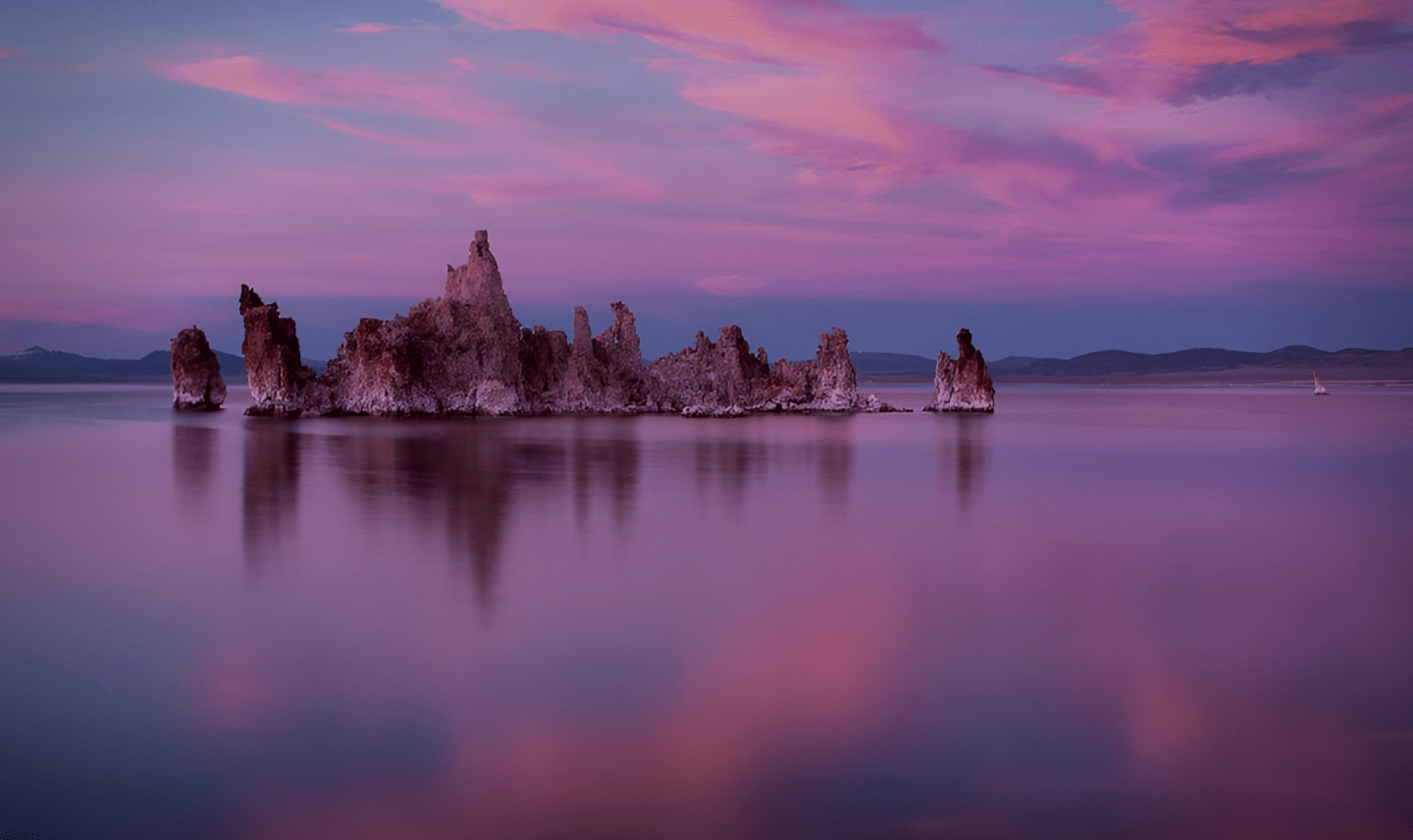
.webp)
.png)

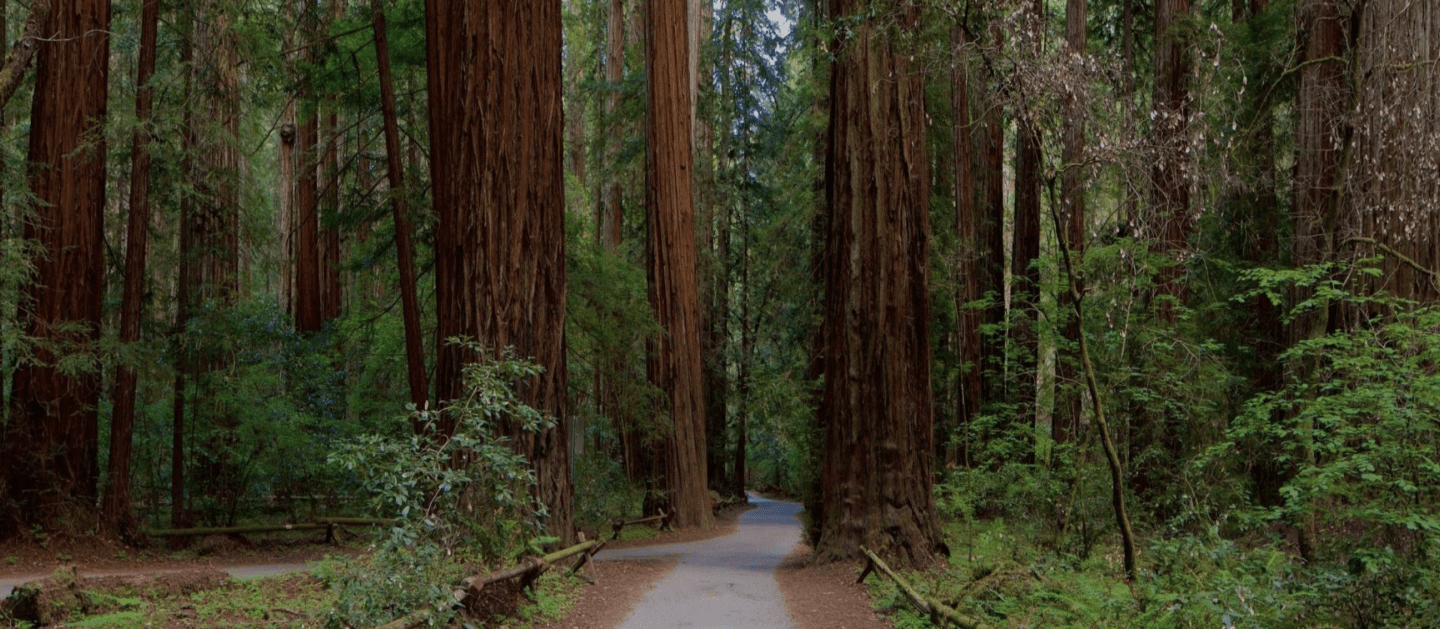
.webp)
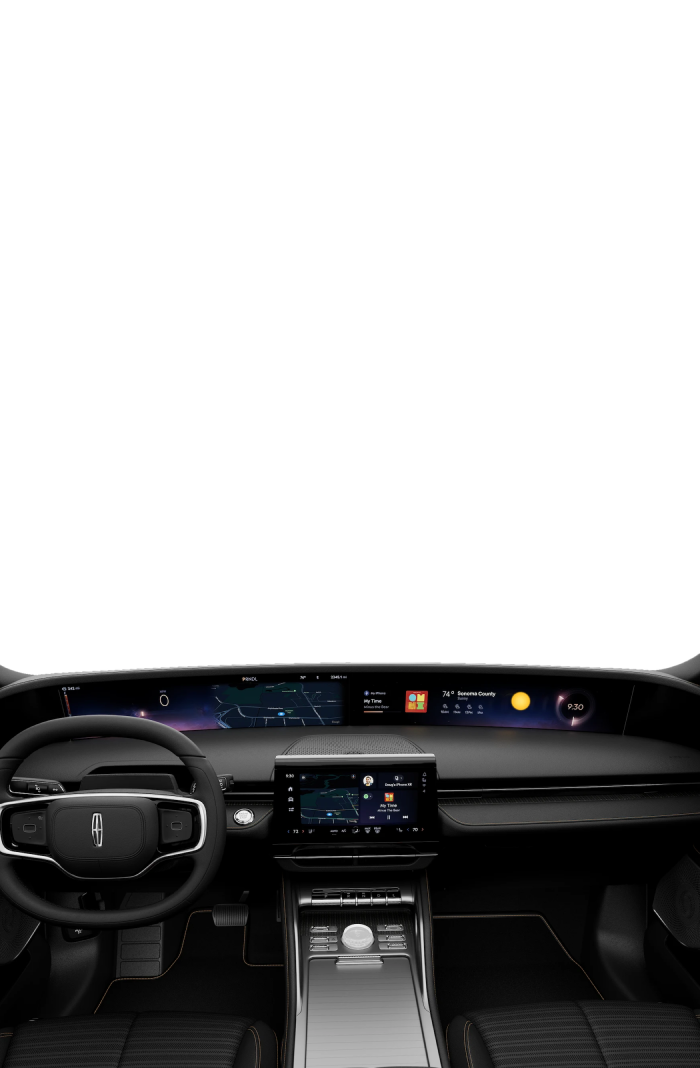
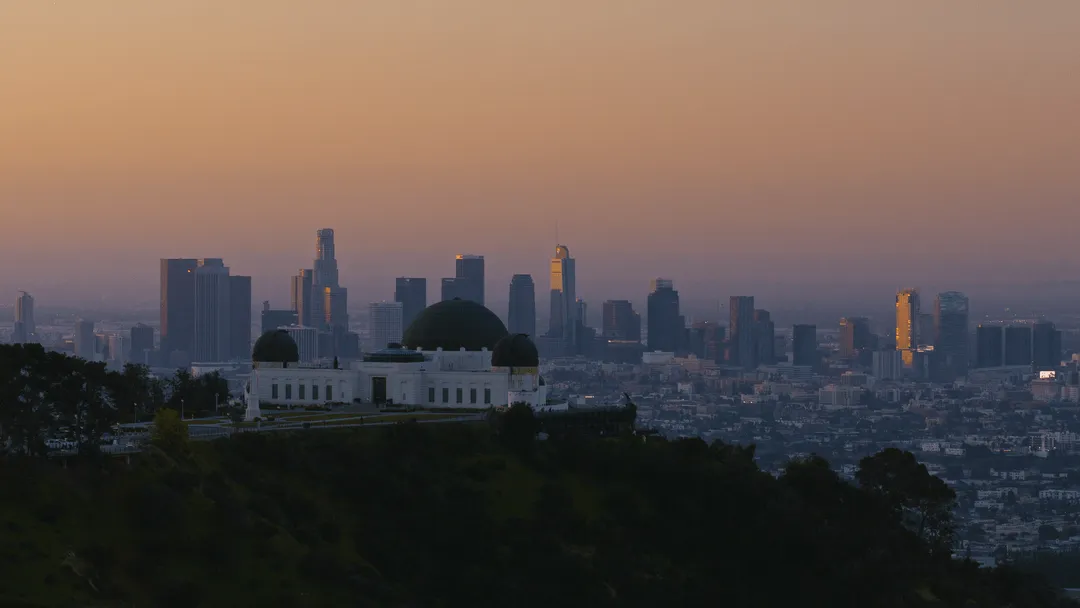
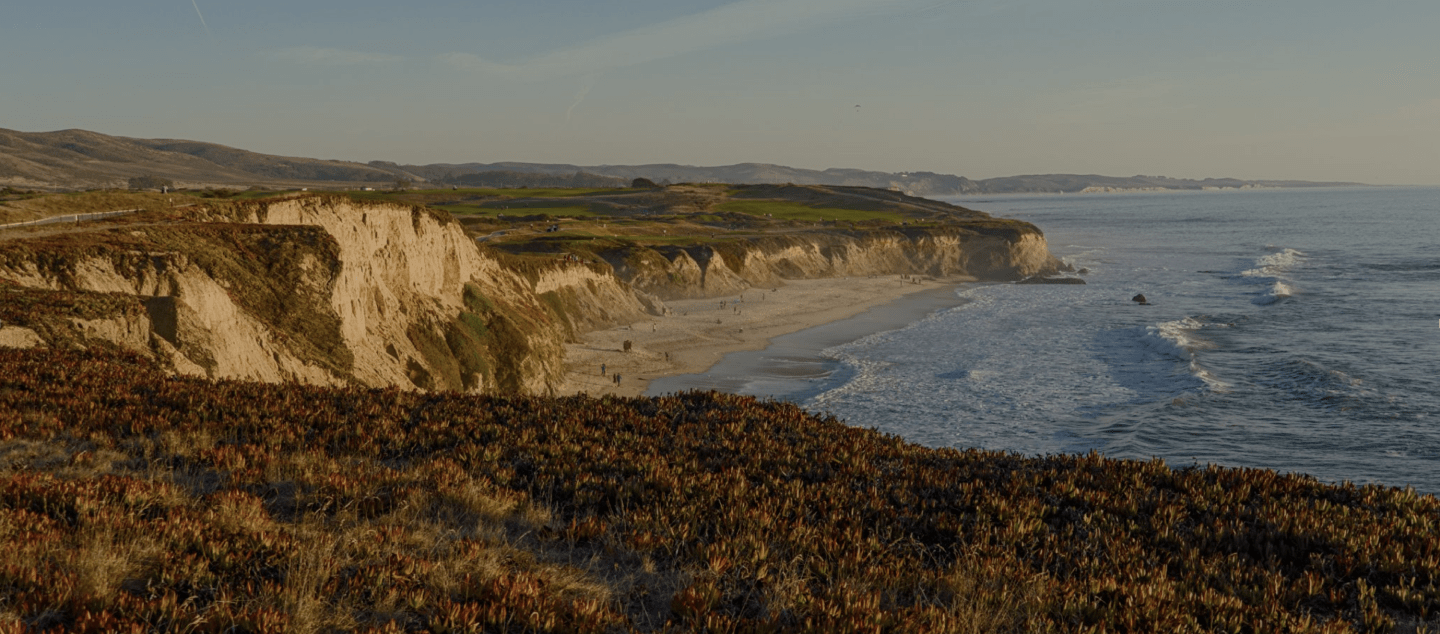
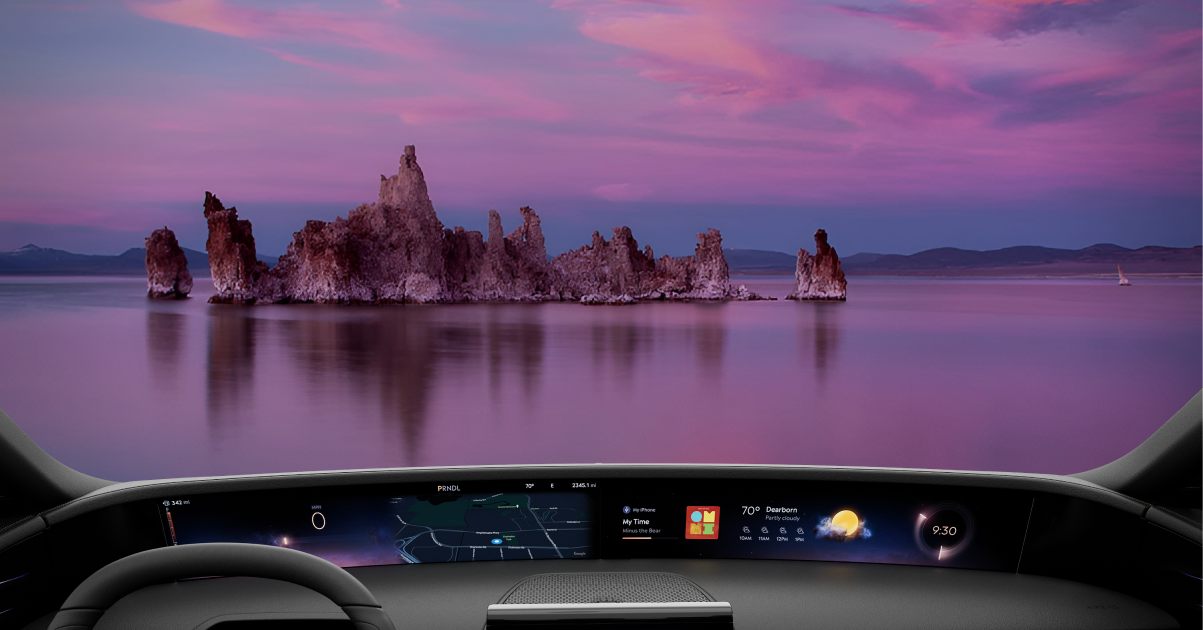

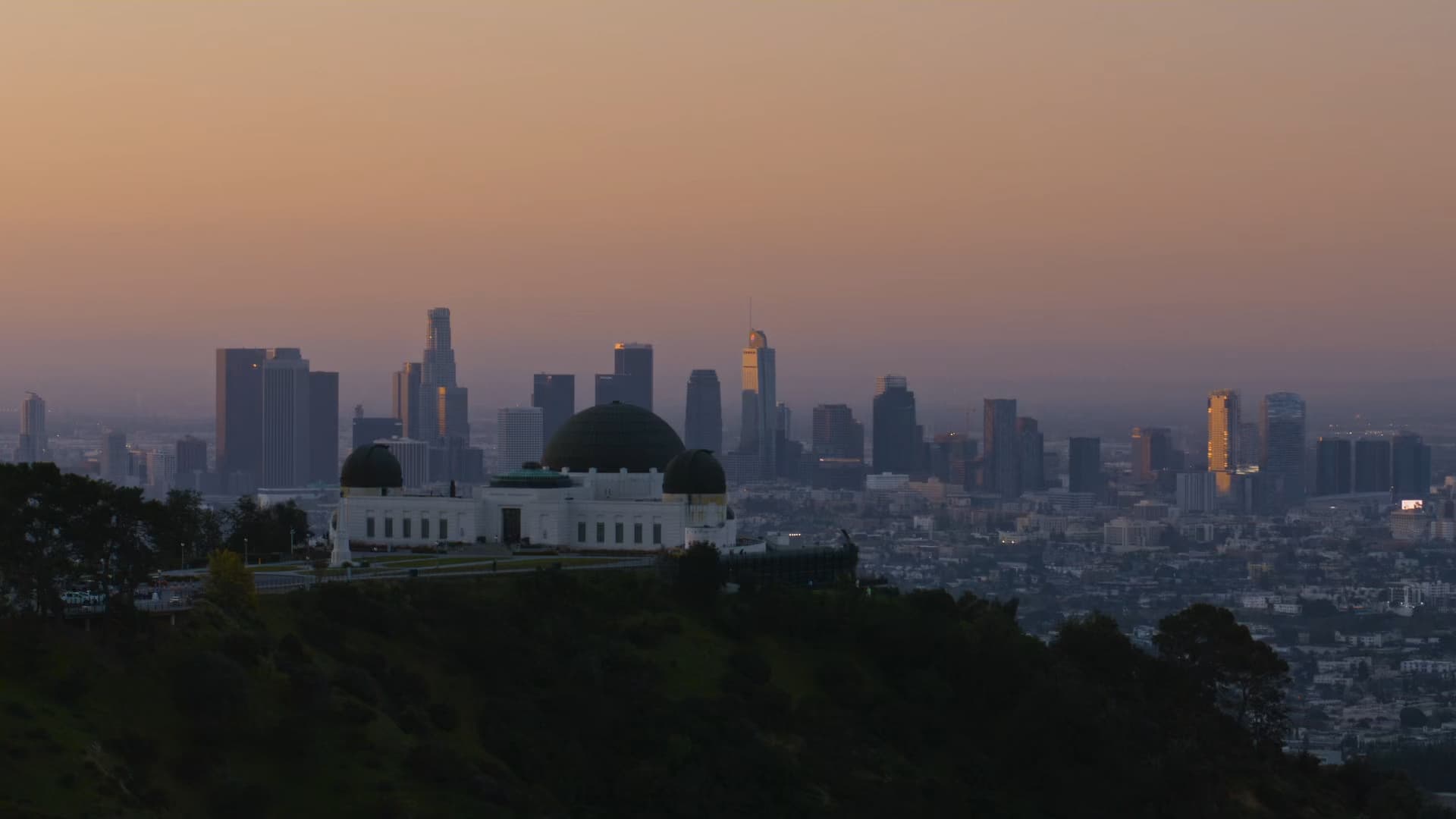
.svg)
